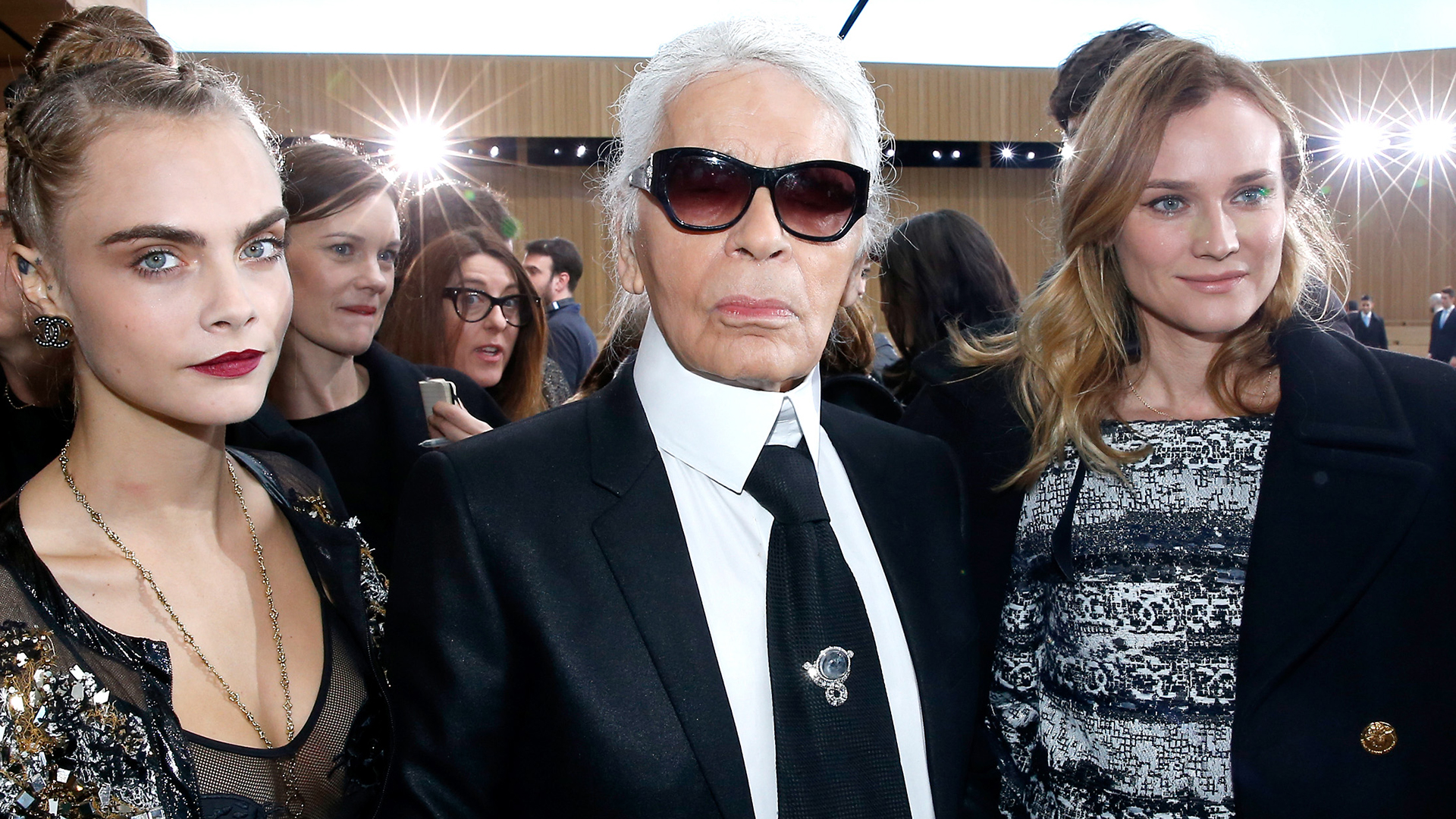The Fashion World Fetes Karl Lagerfeld’s Epic Legacy

Karl Lagerfeld’s trademark style—a sharply tailored black jacket, crisp white shirt, wide cravat and ponytail— made him an instantly recognizable icon in the world of fashion and beyond. His finishing flourish was often a natural diamond Suzanne Belperron brooch pinned on his necktie.
“What better way to adorn an austere mostly black outfit than vintage diamond jewellery, designed by the chicest woman in 1930 to 40s Paris,” said Frank Everett, Sotheby’s senior vice president and luxury sales director. “That is style, and that’s why he will always be The Kaiser of Fashion.”
This year’s annual Met Gala theme is dedicated to Lagerfeld, the once undisputed king of couture. The dress code: In honor of Karl. The May 1 event kicks off the museum’s exhibition “Karl Lagerfeld: A Line of Beauty.” Organized by the Met Costume Institute’s curator Andrew Bolton and the designer’s friend Amanda Harlech, the exhibit of sketches and 150 garments showcases Lagerfeld’s design process, and aesthetic and conceptual themes from the 1950s to his final collection in 2019.
It’s a tribute worthy of the man who was known as fashion’s hardest-working designer. Lagerfeld dominated the fashion world for decades as the creative director for Chanel, Fendi, and his eponymous label. Over his 50-plus-year career, he dressed the biggest stars. Working up until he passed away in 2019 at age 85, he remained influential, daring, and true to his personal style.

As the fashion world celebrates Lagerfeld’s unmistakable style and creative genius, we are reminded of his jewellery obsession.
jewellery was always part of Lagerfeld’s signature flair. Sometimes it was a singular natural diamond brooch or tie pins on his lapel or necktie; other times he wore layers of chunky chain necklaces, heavy metal bracelets, or rings on every finger. His collection ranged from piles of silver Chrome Hearts rings and chains to important JAR pieces. From edgy designs to the classics, Lagerfeld also amassed iconic designs like Verdura’s Maltese cross brooches, David Webb jeweled animals, Cartier signature pieces and, of course, Chanel jewellery.
Lagerfeld is credited with making jeweled brooches a fashionable men’s accessory. Today, natural diamond pins are commonplace among A list celebrities on the red carpet and sports stars today.
His taste for the original, artistic, and beauty is what drew him to Suzanne Belperron. “It makes perfect sense to me that Lagerfeld had a love and appreciation of the designs of Suzanne Belperron,” says Everett. “They were both forward thinkers, always focused on creating something new, modern, and fresh.”

Lagerfeld collected Belperron’s brooches, many of which were sold at auctions after his death. His collection included a diamond leaf often worn on his necktie, a rock crystal and diamond barrel-shaped pin, and carved chalcedony and sapphire brooch.
When Nico Landrigan, whose family owns Belperron’s name and archive of 9,300 drawings, first learned of Lagerfeld’s passion for the designer, he asked him to contribute to the Belperron book published by Thames & Hudson in 2015. Lagerfeld didn’t hesitate and submitted what Landrigan described as a “love letter” to the jewellery designer.
“It was love at first sight,” Lagerfeld wrote about seeing Belperron’s jewellery for the first time at Lydia Courteille’s shop in Paris.
“He understood that some of the great 20th century talents didn’t always become the most well-known,” said Landrigan. He surmised that Lagerfeld probably saw something of himself in Belperron’s daring designs saying: “You have to be an iconoclast to be noticed. That was Belperron’s talent, she knew how to break something and make it beautiful.”
Belperron had the “audacity” to leave her work unsigned, said Landrigan. That gesture clearly made an impression on Lagerfeld who wrote: “She never signed any of her work. But you can feel it’s hers and only hers.”

Clearly, Belperron’s style touched Lagerfeld in a poetic way when he wrote: “She created a perfect and beautiful world out of her own cerebral mind. The flowers and the leaves she invented are blossoms of her brain.”
Lagerfeld also loved Verdura’s designs, another legendary jeweler whose name and archives are owned by the Landrigan family. Nico Landrigan remembers when his father Ward was bidding for a set of two Verdura Maltese brooches at a Sotheby’s auction in 2004. He lost to Lagerfeld, who paid $192,000 for the pair, way beyond the $80,000 to $120,000 estimate.
His taste in jewellery, like in everything else, was anything but ordinary. “I am a black diamond, unfaceted,” the designer once said. “Black diamonds are rare, hard to cut, and therefore uncommercial.” That quote says volumes about the late designer’s sharp wit and attitude. His reproach for mainstream commercialism was clear. As he put it: “Trendy is the last stage before tacky.”
